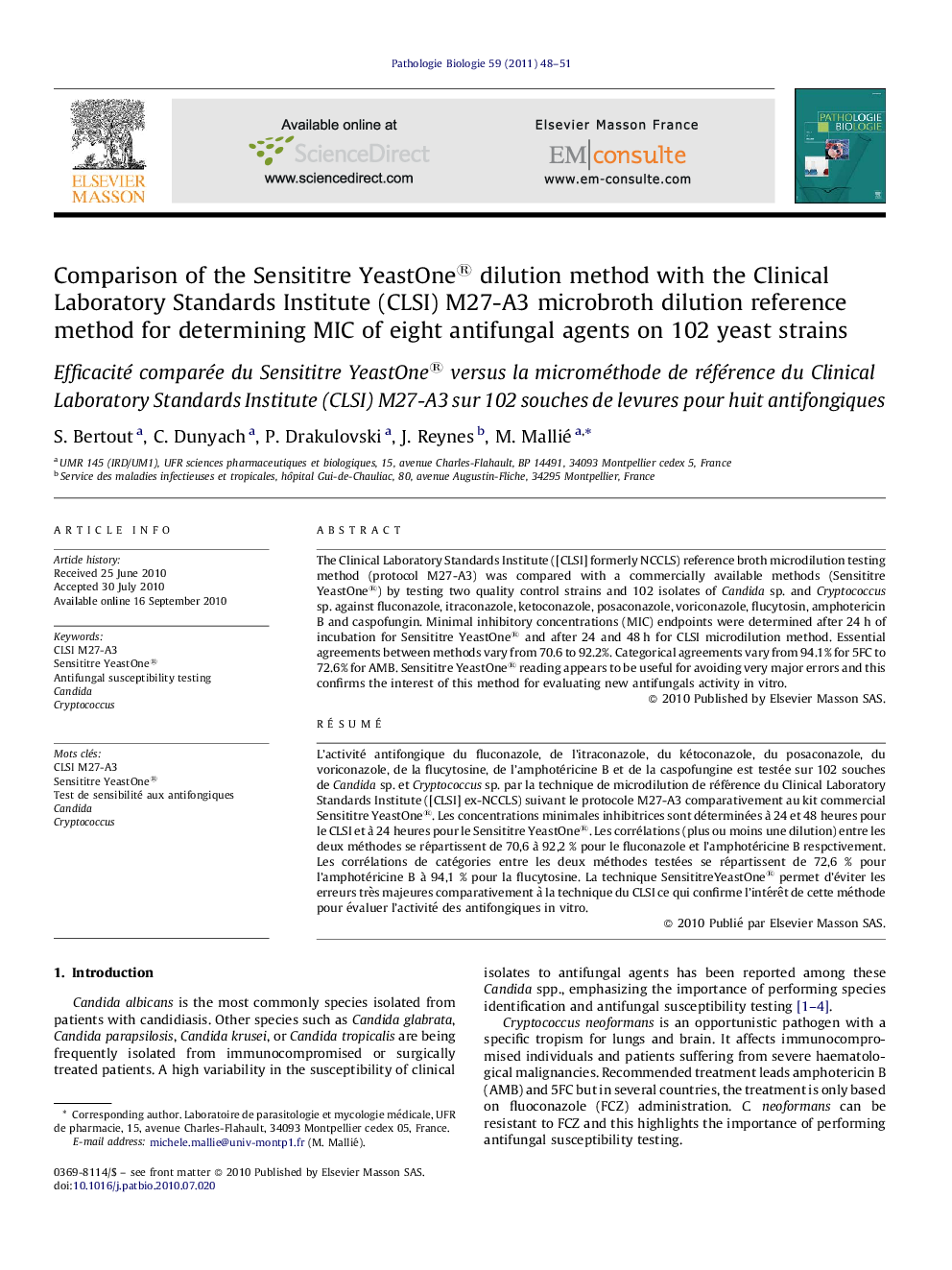| کد مقاله | کد نشریه | سال انتشار | مقاله انگلیسی | نسخه تمام متن |
|---|---|---|---|---|
| 4136267 | 1271905 | 2011 | 4 صفحه PDF | دانلود رایگان |

The Clinical Laboratory Standards Institute ([CLSI] formerly NCCLS) reference broth microdilution testing method (protocol M27-A3) was compared with a commercially available methods (Sensititre YeastOne®) by testing two quality control strains and 102 isolates of Candida sp. and Cryptococcus sp. against fluconazole, itraconazole, ketoconazole, posaconazole, voriconazole, flucytosin, amphotericin B and caspofungin. Minimal inhibitory concentrations (MIC) endpoints were determined after 24 h of incubation for Sensititre YeastOne® and after 24 and 48 h for CLSI microdilution method. Essential agreements between methods vary from 70.6 to 92.2%. Categorical agreements vary from 94.1% for 5FC to 72.6% for AMB. Sensititre YeastOne® reading appears to be useful for avoiding very major errors and this confirms the interest of this method for evaluating new antifungals activity in vitro.
RésuméL’activité antifongique du fluconazole, de l’itraconazole, du kétoconazole, du posaconazole, du voriconazole, de la flucytosine, de l’amphotéricine B et de la caspofungine est testée sur 102 souches de Candida sp. et Cryptococcus sp. par la technique de microdilution de référence du Clinical Laboratory Standards Institute ([CLSI] ex-NCCLS) suivant le protocole M27-A3 comparativement au kit commercial Sensititre YeastOne®. Les concentrations minimales inhibitrices sont déterminées à 24 et 48 heures pour le CLSI et à 24 heures pour le Sensititre YeastOne®. Les corrélations (plus ou moins une dilution) entre les deux méthodes se répartissent de 70,6 à 92,2 % pour le fluconazole et l’amphotéricine B respctivement. Les corrélations de catégories entre les deux méthodes testées se répartissent de 72,6 % pour l’amphotéricine B à 94,1 % pour la flucytosine. La technique SensititreYeastOne® permet d’éviter les erreurs très majeures comparativement à la technique du CLSI ce qui confirme l’intérêt de cette méthode pour évaluer l’activité des antifongiques in vitro.
Journal: Pathologie Biologie - Volume 59, Issue 1, February 2011, Pages 48–51